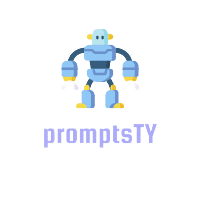Have you ever felt lost when trying to engage in cross-cultural conversations? It’s totally normal! Navigating cultural nuances can be tricky, and knowing where to start can leave you scratching your head.
But don’t worry! If you stick around, I’m here to share some awesome ChatGPT prompts that can unlock meaningful dialogue and foster understanding between different cultures.
From creating character dialogues that showcase cultural diversity to generating thought-provoking questions, you’ll find a treasure trove of ideas to enhance your conversations. Let’s dive in!
Key Takeaways
- Cross-cultural conversations can be enhanced with specific prompts that showcase cultural nuances and diverse perspectives.
- Using ChatGPT, create dialogues that reflect various cultural backgrounds to foster understanding and empathy.
- Explore cultural differences and similarities through tailored prompts, encouraging engaging discussions.
- Cross-cultural collaboration prompts can illustrate teamwork and real-world partnerships across cultures.
- Generate insightful questions to dive deeper into discussions about identity, globalization, and cultural appropriation.
- Refine ChatGPT prompts for clarity and context, focusing on character backgrounds and cultural details.

Best ChatGPT Prompts for Cross-Cultural Dialogue Writing
Crafting cross-cultural dialogues requires sensitivity and an understanding of diverse perspectives.
Here are some prompts you can copy and paste into ChatGPT to get engaging and culturally rich conversations:
- “Write a dialogue between a Japanese businessman and an American entrepreneur discussing the importance of patience in business negotiations.”
- “Create a conversation between a French artist and a Nigerian sculptor exploring how their cultural backgrounds influence their art.”
- “Generate a dialogue between a Muslim woman and a Jewish man sharing their thoughts on community building in diverse societies.”
- “Write a scene where a Chinese student and a Canadian student discuss their cultural festivals and traditions.”
How to Use ChatGPT for Effective Cross-Cultural Conversations
Using ChatGPT for cross-cultural conversations can enhance understanding and build bridges.
Start by providing context about the cultures involved to help the AI generate authentic dialogues.
Next, ask specific questions that highlight cultural nuances and perspectives.
For example, you might say:
- “Simulate a conversation between a Brazilian and an Indian sharing their experiences with family traditions.”
- “Engage in a dialogue where a Mexican and a German discuss their views on work-life balance.”
Be mindful of tone and context; ensuring that the language reflects cultural sensitivities can lead to more meaningful exchanges.
Prompts to Encourage Cultural Understanding and Empathy
Identifying prompts that foster empathy is vital for effective cross-cultural dialogue.
Here are some prompts to help your conversations delve into deeper understanding:
- “Write a dialogue where a refugee from Syria discusses their journey with a local volunteer in Canada.”
- “Create a conversation between an Indigenous person and a university student from an urban area discussing environmental concerns.”
- “Generate a dialogue where a first-generation immigrant shares their challenges and triumphs with their second-generation child.”
These prompts encourage users of ChatGPT to explore multiple narratives and develop a sense of empathy through storytelling.
Creating Character Dialogues Across Different Cultures with ChatGPT
Developing multicultural characters can add richness to your writing.
Use the following prompts to create vivid dialogues that showcase cultural traits and background stories:
- “Develop a dialogue between a Russian grandmother and her American granddaughter discussing the importance of heritage.”
- “Create a scene where a South Korean chef and an Italian chef share techniques and traditions related to cooking.”
- “Write a conversation between a South African educator and a British teacher about different approaches to education.”
These character-driven dialogues can help illuminate cultural values and unique perspectives, making your writing more relatable and enjoyable.

Prompts for Discussing Cultural Differences and Similarities
Exploring cultural differences and similarities can lead to enlightening conversations.
Here are some prompts you can use in ChatGPT to spark discussions around these topics:
- “Generate a dialogue between a Scottish Highlander and a Hawaiian native discussing their distinct traditions and festivals.”
- “Write a conversation where a Chinese expatriate in Australia shares experiences about celebrating New Year compared to local customs.”
- “Create a scene where an Italian and an Indian chef compare their approaches to spices in cooking, highlighting differences and overlaps.”
- “Simulate a discussion between an Australian farmer and a Brazilian landowner about agricultural practices and challenges in their regions.”
These prompts encourage the uncovering of both unique qualities and shared experiences, fostering deeper engagement with diverse cultures.
Writing Scenarios That Highlight Cross-Cultural Collaboration
Cross-cultural collaboration not only enriches narrative depth but also reflects real-world partnerships.
Leverage these prompts in ChatGPT to create compelling scenarios that showcase teamwork across cultures:
- “Write a scene where a team of engineers from different countries works together on a renewable energy project.”
- “Generate a dialogue between a Kenyan entrepreneur and a German investor discussing a joint venture in sustainable tourism.”
- “Create a conversation where local artisans from India and Italy collaborate on a cultural exchange art project.”
- “Simulate a meeting between a multinational organization’s representatives designing a campaign for climate action.”
Such scenarios cultivate a narrative that demonstrates the power of cultural collaboration, enhancing the reader’s appreciation of intercultural dynamics.
Using ChatGPT to Generate Questions for Cross-Cultural Discussions
Asking the right questions can significantly deepen cross-cultural discussions.
Here are some actionable prompts for using ChatGPT to generate insightful questions:
- “Create a list of open-ended questions that a facilitator might use in a multicultural workshop about identity and belonging.”
- “Generate questions for a roundtable discussion that explores the impact of globalization on local cultures.”
- “Write a set of thought-provoking queries aimed at understanding generational cultural differences in immigrant families.”
- “Formulate questions that encourage discussion about cultural appropriation vs. appreciation within artistic communities.”
These questions can serve as excellent conversation starters, ensuring meaningful and engaging discussions about cultural topics.
Tips for Refining Cross-Cultural Dialogue with ChatGPT Prompts
Improving the quality of cross-cultural dialogue involves refining your prompts for clarity and context.
Here are some tips to enhance your dialogue writing with ChatGPT:
- “Be specific about characters and settings. For instance, instead of asking for a conversation between two people, specify their backgrounds and the context.”
- “Incorporate cultural details to enrich the dialogue, such as local idioms, traditions, or current events relevant to the cultures involved.”
- “Request multiple perspectives by framing prompts to encourage characters to react to each other’s viewpoints.”
- “Edit and iterate: after generating initial dialogues, refine your prompts based on the context and tone you want to achieve.”
Following these tips can lead to more engaging and authentic dialogues that resonate with readers while respecting cultural nuances.

Examples of Cross-Cultural Dialogue Prompts for Inspiration
Having a set of diverse and engaging dialogue prompts can spark creativity and guide your writing process.
Here are some prompts designed to inspire cross-cultural dialogue scenarios:
- “Simulate a conversation between a Tibetan monk and a New York City psychologist about mindfulness and stress in their respective cultures.”
- “Write a dialogue where an Inuit artist and a Brazilian musician discuss how their environments influence their creative expressions.”
- “Create a scene where a Colombian coffee farmer negotiates with a Japanese tea importer about sustainable practices and quality standards.”
- “Generate a conversation between a French baker and a Middle Eastern chef exploring the evolution of bread in their cultures.”
- “Draft a dialogue between a Canadian Indigenous leader and a European historian discussing the importance of oral traditions in preserving history.”
These examples can ignite new ideas and help you understand the intersecting themes of culture and communication.
FAQs
Effective prompts include questions that focus on shared experiences, cultural practices, and personal stories. Prompts should encourage open-ended responses to facilitate deeper understanding and connections between different cultural perspectives.
ChatGPT can enhance conversations by providing context, generating culturally relevant questions, and suggesting responses that promote empathy. It fosters a safe space for exploring differences and similarities, helping users navigate complex cultural discussions.
To improve dialogue writing, focus on clarity, cultural sensitivity, and authenticity. Use prompts that encourage character depth, and include specific cultural references to create more relatable and meaningful interactions across different backgrounds.
Examples include: “Describe a time when you learned something surprising about another culture” or “How does your culture influence your perspective on collaboration?” Such prompts encourage sharing personal stories and insights.
